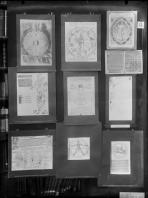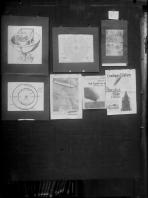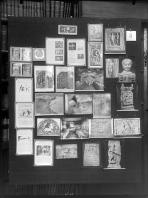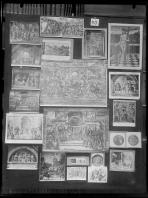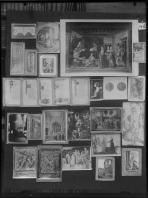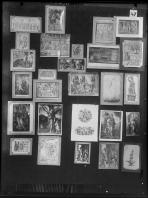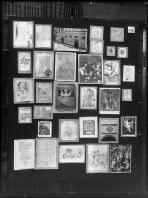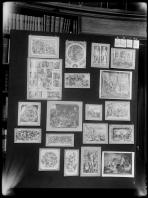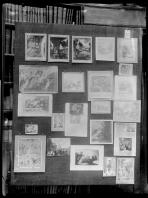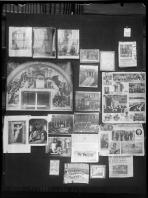Panel 8 gives direct access to issues with which Warburg grappled in the very last year of his life, 1928/29, a year devoted to preparation of the Atlas, largely spent in Italy. Between September and June, he journeyed from Milan to Naples and back again, accompanied by Gertrud Bing as his scholarly assistant and Franz Alber as his personal aide; the party resided nearly six months in Rome. It was, for Warburg, a time of heady discovery and synthesis. To move through Panel 8 is to retrace both external and internal movements, to see how insight could be triggered by onsite experience.
In mid-October, in Bologna, Warburg noted in the institutional diary (Tagebuch) that the chief task before him was to determine how the concept of “infinite space”—a mathematical and psychotechnical construct—developed out of the antique model of a stereometrically tiered space through which souls were believed to ascend. A student of shifting mentalities, he saw here a means to follow the move (always reversible) from the imagistic to the numeric, the magical to the rational. How did it come about that the age-old, earth-centered, anthropocentric model was exploded, the model that posited orbiting planets, occupying seven spheres and ruled by planetary deities—the Moon, Mercury, Venus, the Sun, Mars, Jupiter, and Saturn—who (astrologically) governed the affairs of men? This was a cosmology that had allowed the glorification of the individual personality, for it saw the step-by-step upward ascent of the soul through the spheres as the ur-act of spiritual liberation: apotheosis—a phenomenon explored on Panel 7. Giordano Bruno was Warburg’s guide to the shift in consciousness, for in his writings this bold thinker, burned at the stake in Rome in 1600, banished the old gods, peopling the heavens instead with allegorical constellations of moral worth, and proposed an infinite universe where stars were suns.
Panel 8, posthumously labeled Ascent to the Sun” (Auffahrt zur Sonne), was given over to archaeological discoveries that shed light on Greco-Roman cults centered on the planetary deity Helios-Sol, daily dispeller of darkness. In seeking out the logic of “heliotropism,” Warburg seized upon the mystery religion Mithraism, dedicated to the worship of the Romanized Indo-Iranian solar deity Mithras, premised on the earth-centered cosmology and notions of ascent, holding out the promise of personal salvation to the Roman soldiers who were foremost among its initiates. In a letter of January 7, 1929 to his young collaborator Fritz Saxl, directing the Warburg Library in Hamburg in his absence, Warburg expressed the hope that the study of Bruno would help him in his pursuit of the “the psychology and phenomenology of ascent,” so that “the path from Mithras to Rubens might shine forth.” For Warburg, as he had written to Saxl in October, Rubens’ “Apotheosis” paintings signified the “opening up” (Aufschliessung) of heaven.
Themes introduced in Panel 8 would be picked up in Panel 56: “Ascent and Fall” (Auffahrt und Sturz).
